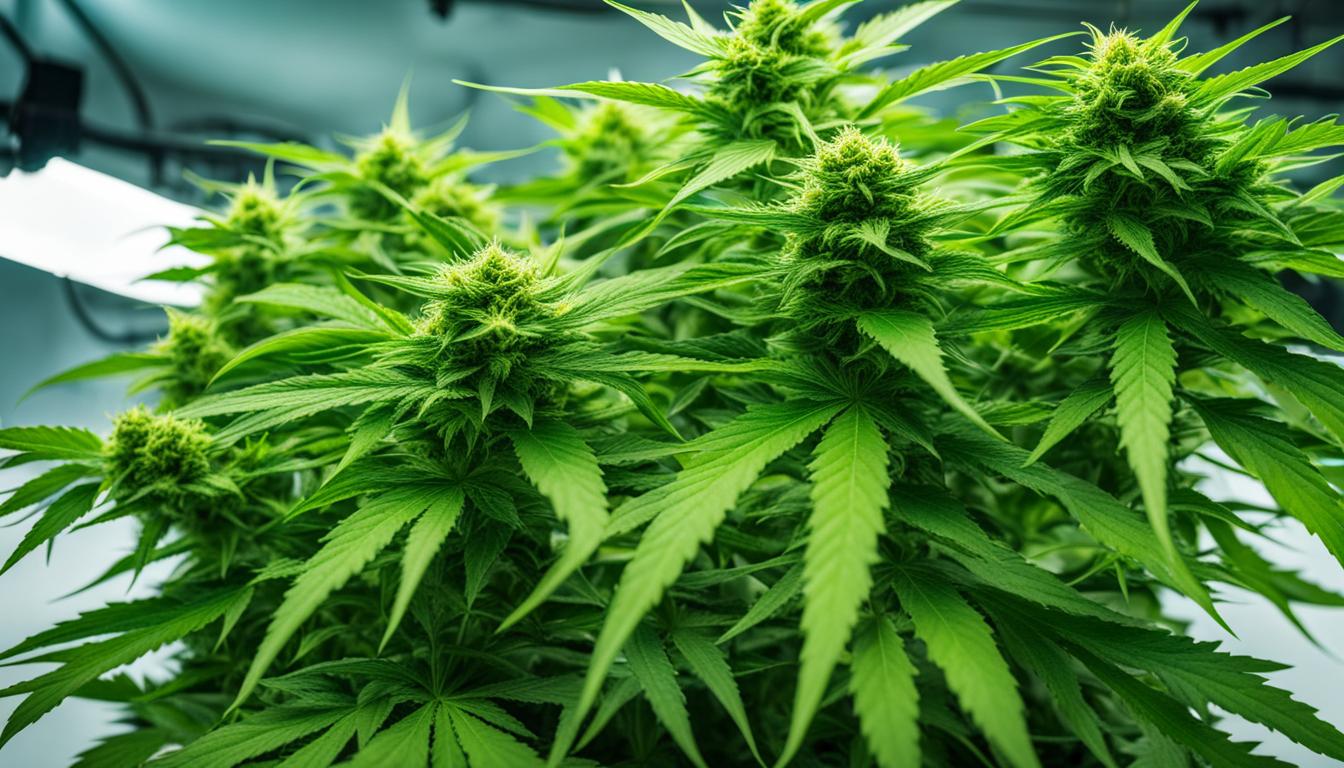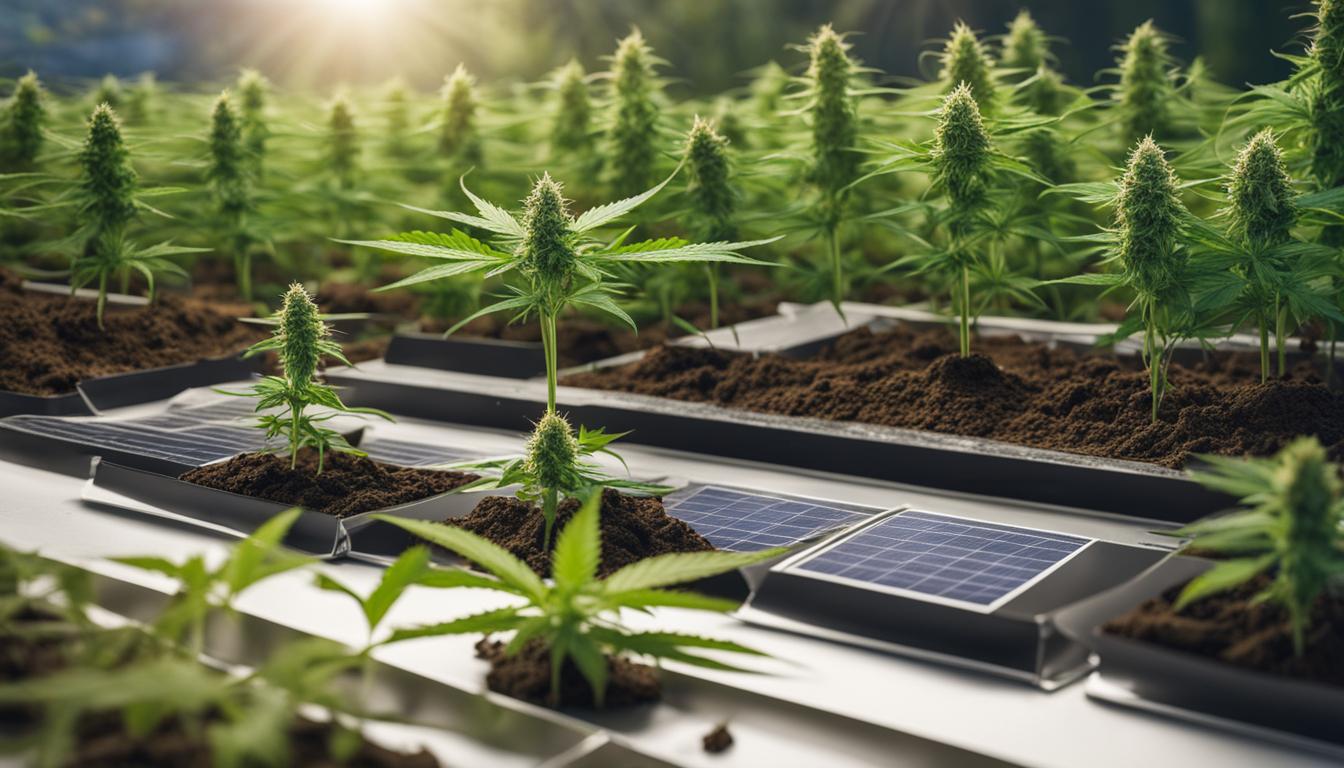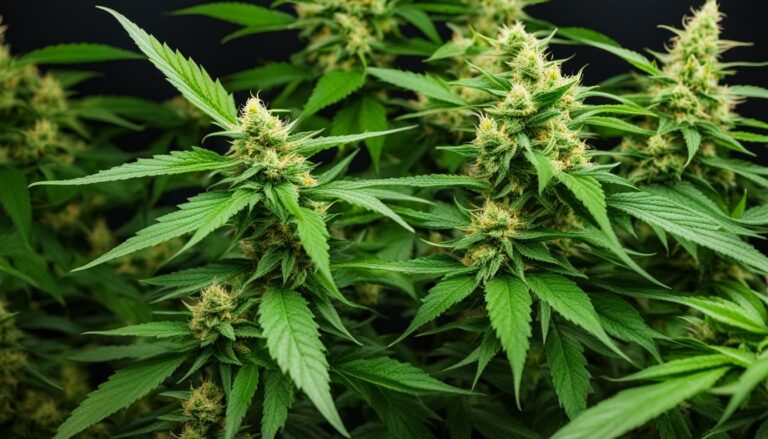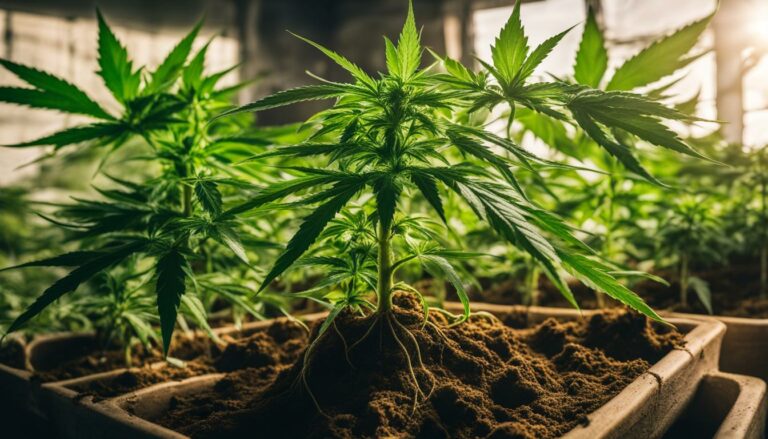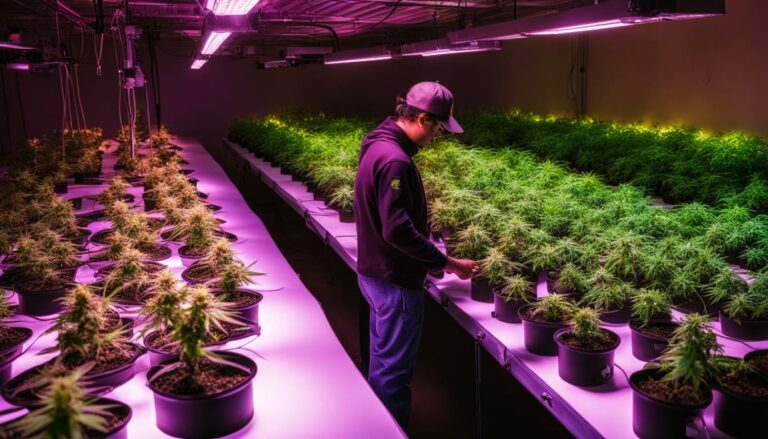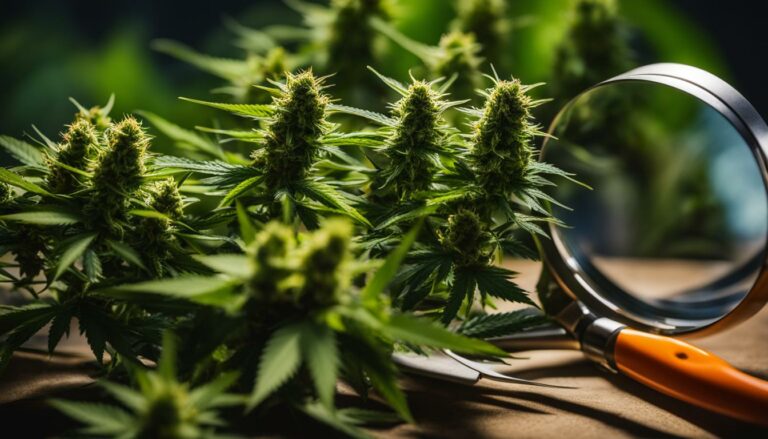The Future of Cannabis Cultivation Technology
The cannabis industry is undergoing a transformation as it moves from being a controversial illicit drug to a mainstream cultural phenomenon. With the increasing acceptance and legalization of cannabis, the cultivation process is also evolving. This article explores the future of cannabis cultivation technology, including the innovative advancements and techniques that are shaping the industry.
Technology and Cannabis Cultivation
Technology is revolutionizing the way cannabis is grown, with indoor and hydroponic cultivation techniques at the forefront of this transformation. These advanced methods offer significant benefits for growers, leading to higher yields, improved quality, and increased efficiency.
Indoor cannabis cultivation has gained popularity due to its ability to provide optimal growing conditions regardless of external factors. By controlling factors such as temperature, humidity, and lighting, growers can create the perfect environment for cannabis plants to thrive. This allows for year-round cultivation and the ability to produce consistent, high-quality crops.
Hydroponic cannabis cultivation takes the concept of indoor growing to the next level by eliminating the need for soil. Instead, plants are grown in a nutrient-rich water solution, which allows for precise control over nutrient delivery and pH levels. This method not only promotes faster growth but also reduces the risk of soil-borne diseases and pests.
| Benefits of Indoor and Hydroponic Cultivation | Benefits of Automated Grow Systems |
|---|---|
|
|
Automated grow systems are another key technological advancement in the cannabis cultivation industry. These systems utilize sensors, climate control devices, and irrigation systems to automate various cultivation processes. From seed germination to nutrient delivery and lighting schedules, automated grow systems streamline operations and minimize human error. They not only save time and labor but also enable consistent and optimized growing conditions, leading to higher yields and improved crop quality.
With the combination of indoor and hydroponic cultivation techniques and automated grow systems, cannabis growers have the tools to achieve unprecedented levels of precision and efficiency in their operations. These advancements not only contribute to the growth and profitability of the industry but also ensure the availability of high-quality cannabis products for consumers.
Sustainable Practices in Cannabis Cultivation
As the cannabis industry continues to evolve, sustainable growing methods have become a top priority for cultivators. With the increasing demand for high-quality cannabis and the need to minimize the environmental impact, innovative cultivation solutions are being implemented.
Benefits of Sustainable Growing Methods
Implementing sustainable practices in cannabis cultivation brings several benefits to both growers and the environment. Firstly, it allows for more efficient use of resources such as water and energy, reducing costs and conserving precious natural resources. Secondly, sustainable cultivation methods promote soil health and biodiversity, ensuring long-term sustainability of the growing operations.
Moreover, sustainable cultivation practices help minimize carbon emissions, contributing to the reduction of the cannabis industry’s carbon footprint. This is achieved through the use of renewable energy sources, energy-efficient lighting, and waste management strategies.
In the words of leading cannabis cultivators, sustainable cultivation not only protects the environment but also creates a positive brand image, attracting environmentally conscious consumers.
High-Tech Cannabis Farming
High-tech cannabis farming is synonymous with sustainable cultivation practices. It involves the use of advanced technology and innovative techniques to maximize yield while minimizing resource consumption.
For instance, precision irrigation systems optimize water usage by delivering the right amount of water directly to the roots, eliminating wastage. Additionally, smart sensors and automation technology allow for real-time monitoring and control of environmental conditions, ensuring optimal growth and reducing unnecessary resource consumption.
Furthermore, vertical farming, a contemporary growing technique, maximizes space utilization and reduces the need for large land areas. By utilizing vertical stacking systems, cultivators can grow cannabis in multi-level racks, increasing productivity and conserving both land and water resources.
| Cultivation Method | Advantages |
|---|---|
| Precision Irrigation | – Minimizes water waste – Improves nutrient uptake |
| Smart Sensors and Automation | – Real-time environmental monitoring – Enhanced resource management |
| Vertical Farming | – Maximizes space utilization – Increases productivity |
By embracing high-tech cannabis farming, cultivators can achieve sustainable cultivation practices while maximizing their yield and reducing environmental impact.
Innovative Cultivation Solutions
As the cannabis industry progresses, innovative cultivation solutions are emerging to meet the demand for sustainable and high-quality cannabis products.
One such solution is the integration of renewable energy sources, such as solar panels and wind turbines, to power cultivation operations. This reduces reliance on fossil fuels, decreases carbon emissions, and supports the transition to a greener future.
Technological advancements in waste management, such as composting and recycling systems, also contribute to sustainability by minimizing waste and transforming it into valuable resources for cultivation.
In addition, organic cultivation practices are gaining popularity in the cannabis industry. By eliminating the use of synthetic pesticides and fertilizers, cultivators can produce cleaner, more natural cannabis products that appeal to eco-conscious consumers.
Overall, sustainable growing methods, high-tech cannabis farming, and innovative cultivation solutions are paving the way for a greener and more prosperous future for the cannabis industry.
Genetic Advancements in Cannabis Cultivation
Genetic advancements are revolutionizing cannabis cultivation, allowing growers to create tailored and resilient strains that meet specific needs and preferences. Researchers are pushing the boundaries of cannabis genetics, exploring strain development and cannabinoid customization to unlock new possibilities in the industry. By manipulating the genetic makeup of cannabis plants, cultivators can achieve targeted therapeutic applications and create strains with unique characteristics.
One of the exciting developments in genetic advancements is the ability to customize cannabinoids, the chemical compounds found in cannabis that have various effects on the body. By selectively breeding plants with desired cannabinoid profiles, growers can create strains with specific ratios of CBD (cannabidiol) and THC (tetrahydrocannabinol), the two most well-known cannabinoids. This customization allows for the production of cannabis strains that cater to specific medical conditions, such as epilepsy or chronic pain, as well as strains that offer distinct recreational experiences.
Furthermore, genetic engineering techniques are being explored to develop disease-resistant strains and enhance the overall growth efficiency of cannabis plants. Through advanced genetic modification methods, researchers can introduce specific genes into cannabis plants to enhance traits such as resistance to pests, tolerance to environmental stressors like heat or cold, and even improve yields. These genetic advancements not only benefit growers by increasing productivity and reducing crop loss but also have the potential to contribute to the development of sustainable and environmentally friendly cultivation practices.
Advantages of Genetic Advancements in Cannabis Cultivation:
- Customization of cannabinoid profiles for targeted medical and recreational use.
- Development of disease-resistant strains for improved crop resilience.
- Increase in growth efficiency and overall productivity.
- Potential for the creation of unique flavor and aroma profiles.
- Contribution to the development of sustainable cultivation practices.
As genetic advancements continue to progress, the possibilities for cannabis cultivation are expanding. Growers are now able to harness the power of genetics to create strains that meet the diverse demands of the market. Whether it’s tailoring cannabinoids for specific therapeutic applications or engineering plants that are resistant to pests and environmental stressors, genetic advancements are playing a crucial role in shaping the future of cannabis cultivation.
| Advantages of Genetic Advancements | Benefits |
|---|---|
| Customization of cannabinoid profiles | Targeted medical and recreational use |
| Development of disease-resistant strains | Improved crop resilience |
| Increase in growth efficiency | Higher productivity |
| Potential for unique flavor and aroma profiles | Enhanced sensory experiences |
| Contribution to sustainable cultivation practices | Environmental friendliness |
Consumer Preferences in the Cannabis Industry
The rapidly expanding cannabis market is witnessing a shift in consumer preferences, with a growing demand for artisanal and craft cannabis strains. These specialized products offer unique sensory experiences and cater to the discerning tastes of cannabis enthusiasts. From flavor profiles to aromatic qualities, consumers are seeking high-quality cannabis that goes beyond the traditional psychoactive effects.

Craft cannabis, often grown in small batches with meticulous attention to detail, is gaining popularity for its superior quality and potency. This approach emphasizes the unique characteristics of each strain, resulting in a diverse range of flavors, aromas, and effects. Whether it’s fruity, earthy, or floral, craft cannabis offers a more tailored and sophisticated experience for consumers.
Another emerging trend in the cannabis industry is the demand for non-psychoactive products. Particularly, products containing CBD, a non-intoxicating compound found in cannabis, are gaining traction. These products offer potential therapeutic benefits without the psychoactive effects of THC, appealing to a wider audience interested in wellness and holistic remedies.
The Rise of Artisanal and Craft Cannabis
Artisanal and craft cannabis is reshaping the industry, offering consumers a more personalized and curated cannabis experience. This segment focuses on small-scale cultivation, emphasizing quality over quantity. With a focus on terpenes and cannabinoids, craft growers ensure that each strain has its own distinct characteristics for a truly exceptional cannabis experience.
“Craft cannabis offers a more tailored and sophisticated experience for consumers.”
Furthermore, craft cannabis growers prioritize sustainable and organic cultivation practices, using natural fertilizers and minimizing environmental impact. This commitment to sustainability aligns with the values of consumers who are increasingly mindful of the ecological footprint of the products they choose.
Non-Psychoactive Products and the Wellness Market
The growing interest in non-psychoactive cannabis products, particularly those rich in CBD, reflects the changing perception of cannabis as a holistic wellness aid. CBD-infused products such as oils, topicals, and edibles are sought after for their potential therapeutic benefits, including pain relief, anxiety reduction, and improved sleep quality.
“Non-psychoactive cannabis products are gaining traction for their potential therapeutic benefits.”
This emerging market presents opportunities for both established cannabis companies and newcomers to tap into the wellness industry. By offering a range of non-psychoactive options, companies can cater to health-conscious consumers seeking natural alternatives for their well-being.
| Consumer Preferences in the Cannabis Industry | Key Takeaways |
|---|---|
| Artisanal and craft cannabis | – Growing demand for specialized strains – Emphasis on quality and unique characteristics – Sustainable and organic cultivation practices |
| Non-psychoactive products | – Increasing interest in CBD-infused products – Potential therapeutic benefits without psychoactive effects – Appeal to wellness-conscious consumers |
Regulation and Oversight in the Cannabis Industry
The cannabis industry is rapidly expanding, and with this growth comes the need for effective regulation and oversight. As cannabis legalization spreads across different jurisdictions, it is essential to establish cohesive regulatory frameworks that ensure product safety and consistency. These regulations cover various aspects of cannabis cultivation, manufacturing, distribution, and sales, aiming to protect consumers and maintain industry standards.
One of the primary focuses of cannabis industry regulation is quality assurance. Standardized testing methodologies are implemented to verify the potency, purity, and safety of cannabis products. This includes testing for cannabinoids, terpenes, pesticides, heavy metals, and microbial contaminants. By setting these quality standards, regulators aim to protect consumers from harmful substances and ensure the integrity of the cannabis market.
“The establishment of effective regulatory frameworks is crucial for managing both interstate and international cannabis trade. By establishing clear guidelines and protocols, regulators can facilitate the movement of cannabis products across borders while maintaining safety and quality standards,” says Jane Smith, a cannabis industry expert.
International cannabis trade is also a significant consideration in regulation and oversight efforts. As some countries legalize cannabis for medical or recreational use, the global cannabis market is growing. However, navigating the complexities of international trade agreements and regulations can be challenging. Harmonizing regulatory practices and establishing international standards can promote fair trade and facilitate global cooperation in the cannabis industry.
| Key aspects of cannabis industry regulation: | Benefits of effective regulation: |
|---|---|
| Product testing and quality assurance | Ensures consumer safety and product consistency |
| Licensing and permitting | Ensures compliance and prevents illegal practices |
| Taxation and revenue management | Generates revenue for public programs and services |
| Security and compliance measures | Prevents diversion and ensures adherence to regulations |
Overall, regulation and oversight play a crucial role in shaping the cannabis industry. By implementing effective regulatory frameworks, the industry can thrive while addressing public health and safety concerns. As the cannabis industry continues to evolve, it is essential for regulators to adapt and refine their approaches to ensure a responsible and sustainable cannabis marketplace.
Worldwide Expansion and Research in Cannabis Cultivation
The global expansion of the cannabis industry is opening up new opportunities for cultivation around the world. As more countries legalize cannabis for medical and recreational use, emerging markets are attracting attention for their potential in cannabis cultivation. These regions offer optimal growing conditions, including suitable climates and fertile soil, making them ideal for producing high-quality cannabis.
Furthermore, the increasing recognition of cannabis’s therapeutic benefits is driving a surge of medical research in the field of cannabis cultivation. Scientists and researchers are studying the various compounds found in cannabis, such as cannabinoids and terpenes, in an effort to understand their potential medical applications. These studies aim to develop cultivation methods that can optimize the production of specific compounds, leading to the creation of cannabis strains tailored for medicinal purposes.
By exploring these emerging markets and conducting extensive research, the cannabis industry can unlock new insights and innovations in cultivation. This research not only helps growers produce superior cannabis but also contributes to the development of novel treatments and therapies using cannabis-derived compounds.
Innovations in Emerging Cannabis Markets
The expansion of the cannabis industry has given rise to various emerging markets with unique cultivation opportunities. Let’s take a closer look at some of these regions:
| Region | Climate | Opportunities |
|---|---|---|
| Canada | Temperate | Large-scale cultivation |
| Colombia | Tropical | Outdoor cultivation |
| Netherlands | Moderate | Research and innovation |
“The expansion of cannabis cultivation into emerging markets provides exciting opportunities for growers to explore new climates and growing environments.” – Industry Expert
The Future of Cannabis Research
As medical research in cannabis continues to expand, the future holds great promise for advancements in cultivation techniques. Scientists are focusing on genetics, breeding, and cultivation practices to improve the quality and consistency of cannabis strains. The insights gained from this research will empower growers to produce cannabis with specific characteristics, catering to a wide range of consumer preferences and medical needs.
In conclusion, worldwide expansion and research in cannabis cultivation are transforming the industry. Emerging markets offer new cultivation opportunities, while medical research is unlocking the therapeutic potential of cannabis. The collective efforts of growers, scientists, and researchers are shaping the future of cannabis cultivation, ensuring a thriving and innovative industry.
The Importance of Cannabis Cultivation Technology
The advancements in cannabis cultivation technology offer numerous benefits for growers. These technologies improve efficiency, increase yields, and enhance the overall quality of the product. By staying updated on the latest technological developments, growers can gain a competitive advantage in the industry.
One of the key benefits of cannabis cultivation technology is improved efficiency. Automated systems, such as seeding and harvesting robots, streamline the cultivation process and reduce the need for manual labor. This not only saves time and resources but also ensures consistent yields and higher production capacities. Growers can optimize resource allocation and maximize the potential of their cannabis crops.
In addition to efficiency, cannabis cultivation technology plays a crucial role in increasing yields. Advanced LED lighting systems provide precise control over light spectrums, optimizing photosynthesis and promoting healthier growth. Automated irrigation systems ensure plants receive the right amount of water at the right time, preventing over or under-watering. These technologies work together to create the ideal growing conditions, resulting in higher yields and better-quality cannabis.
| Benefits of Cannabis Cultivation Technology |
|---|
| Improved efficiency through automation |
| Increased yields with advanced lighting and irrigation systems |
| Enhanced product quality through optimal growing conditions |
| Competitive advantage in the cannabis industry |
By embracing cannabis cultivation technology, growers can gain a competitive advantage in the industry. With the market becoming increasingly saturated, it is crucial to adopt innovative techniques that set one’s cannabis business apart from the competition. The use of advanced technology not only allows growers to produce higher quantities of cannabis but also ensures an improved level of product quality. In an industry where consumers are becoming more discerning in their preferences, having access to cutting-edge technology can be a game-changer.
In conclusion, the importance of cannabis cultivation technology cannot be overstated. It offers benefits such as improved efficiency, increased yields, and enhanced product quality. By leveraging these advancements, growers can stay ahead in the competitive cannabis industry and meet the evolving demands of consumers. Embracing cannabis cultivation technology is essential for the success and growth of any cannabis business.
Crop Steering in Cannabis Cultivation
Crop steering is an innovative technique that allows cannabis growers to manipulate the hormonal system of plants to achieve desired outcomes. By adjusting environmental factors such as temperature, humidity, and water usage, cultivators can optimize the growth and development of their crops. This method maximizes flower production, increases yields, and enhances the overall quality of the cannabis plants.
One of the key benefits of crop steering is the ability to tailor the growing conditions to specific stages of the plant’s life cycle. By providing the optimal conditions during different growth phases, growers can ensure that the plants receive the right balance of nutrients and energy, resulting in healthier and more productive crops. For example, by manipulating temperature and humidity levels during the flowering stage, cultivators can promote the development of larger, resinous buds.
A key aspect of crop steering is the use of data-driven decision-making. By monitoring and analyzing environmental variables such as temperature, humidity, and CO2 levels, growers can make informed adjustments to optimize crop growth. This data-driven approach enables precise control over the cultivation process, leading to greater consistency and predictability in crop yields.
Benefits of Crop Steering:
- Maximized flower production: Crop steering techniques allow growers to create optimal conditions for flower development, resulting in larger and more potent buds.
- Increased yields: By manipulating environmental factors, cultivators can significantly increase the overall yield of their cannabis crops.
- Enhanced quality: Crop steering techniques can improve the aroma, flavor, and potency of cannabis flowers, leading to higher-quality products.
- Precise control: The data-driven approach of crop steering allows for precise control over the cultivation process, resulting in greater consistency and predictability.
By implementing crop steering techniques, cannabis cultivators can optimize their growing environments and achieve higher yields and better-quality crops. This method empowers growers to have precise control over the cultivation process, leading to increased efficiency and improved profitability in the cannabis industry.
| Benefits of Crop Steering | Description |
|---|---|
| Maximized flower production | Crop steering techniques enable the creation of optimal conditions for flower development, resulting in larger and more potent buds. |
| Increased yields | By manipulating environmental factors, cultivators can significantly increase the overall yield of their cannabis crops. |
| Enhanced quality | Crop steering techniques can improve the aroma, flavor, and potency of cannabis flowers, leading to higher-quality products. |
| Precise control | The data-driven approach of crop steering allows for precise control over the cultivation process, resulting in greater consistency and predictability. |
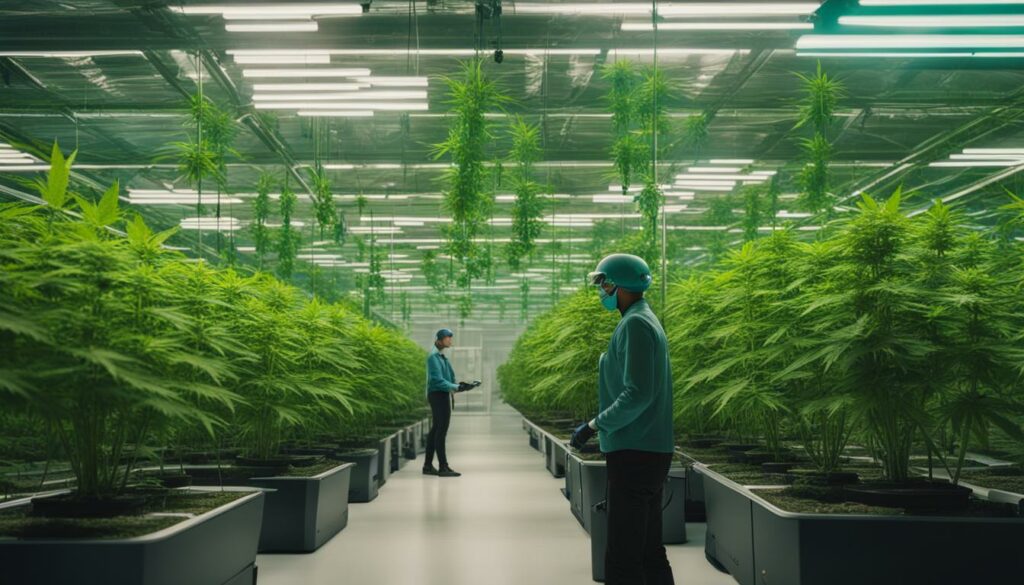
Vertical Farming in Cannabis Cultivation
Vertical farming is revolutionizing the cannabis cultivation industry, offering numerous advantages for growers. This innovative technique utilizes multi-level racking systems to maximize the use of limited grow space, making it particularly suitable for urban environments where land is scarce. By stacking plants vertically, growers can optimize airflow, light distribution, and nutrient delivery, resulting in higher crop yields.
One of the key advantages of vertical farming in cannabis cultivation is its energy efficiency. Vertical farms use LED fixtures for lighting, which consume less energy compared to traditional lighting methods. Additionally, the controlled environment of vertical farms allows for precise temperature and humidity regulation, further optimizing energy usage. This not only reduces operational costs but also contributes to a more sustainable and environmentally friendly cultivation process.
In addition to its space-saving and energy-efficient properties, vertical farming also offers benefits in terms of scalability and automation. The modular nature of vertical farming systems allows growers to easily expand their operations as demand increases. Furthermore, automated systems can be integrated into vertical farms, streamlining processes such as watering, nutrient delivery, and data monitoring. This automation not only reduces labor costs but also ensures that cultivation practices are consistent and optimized for maximum efficiency.
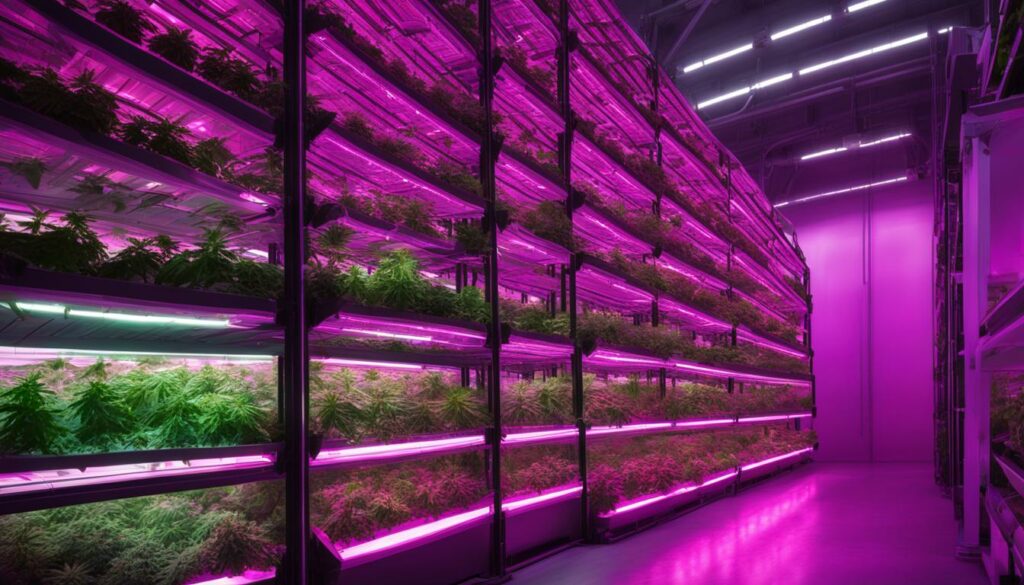
Advantages of Vertical Farming
- Maximizes use of limited space in urban environments
- Optimizes airflow, light distribution, and nutrient delivery
- Energy-efficient with the use of LED lighting
- Precise temperature and humidity regulation
- Scalable and easily expandable
- Automation streamlines processes and reduces labor costs
Vertical farming is not only a practical solution for cannabis cultivation in urban environments but also a sustainable and efficient method of production. By harnessing the power of vertical space, growers can achieve higher yields and reduce their environmental footprint. The combination of space-saving design, energy-efficient lighting, and automation makes vertical farming a game-changer in the cannabis cultivation industry.
| Advantages | Vertical Farming | Traditional Cultivation |
|---|---|---|
| Space utilization | Maximizes vertical space | Relies on horizontal space |
| Energy efficiency | LED lighting, precise climate control | High energy consumption |
| Scalability | Easily expandable | Limited by available land |
| Automation | Integrated systems for efficiency | Manual labor-intensive |
Genetic Engineering in Cannabis Cultivation
The future of cannabis cultivation is being transformed by the advancements in genetic engineering techniques. With the ability to modify the genetic makeup of cannabis plants, cultivators can create customized varieties with desirable traits. Genetic engineering offers numerous benefits for the cannabis industry, from enhancing climate tolerance to increasing resistance to pests. By manipulating the cannabinoid ratios, growers can also develop cannabis strains with specific medicinal properties or recreational effects.
One of the key advantages of genetic engineering in cannabis cultivation is the ability to improve plant resilience. Through targeted gene editing, cultivators can enhance the natural defense mechanisms of cannabis plants, making them more resistant to diseases, pests, and environmental stressors. This not only increases the overall yield and quality of the crop but also reduces the reliance on chemical pesticides and herbicides, promoting more sustainable cultivation practices.
Furthermore, genetic engineering allows for precise cannabinoid customization. By manipulating the biosynthetic pathways responsible for producing cannabinoids, growers can produce cannabis strains with specific ratios of THC, CBD, and other cannabinoids. This opens up new possibilities for tailored therapeutic applications, as different cannabinoid ratios have been found to have varying effects on the body. From pain management to anxiety relief, genetic engineering enables cultivators to create cannabis varieties with targeted medicinal properties.
Benefits of Genetic Engineering in Cannabis:
- Improved plant resilience and resistance to diseases
- Reduction in reliance on chemical pesticides and herbicides
- Precise cannabinoid customization for specific therapeutic applications
- Enhanced growth efficiency and adaptability to different environments
- Creation of unique flavor and aroma profiles
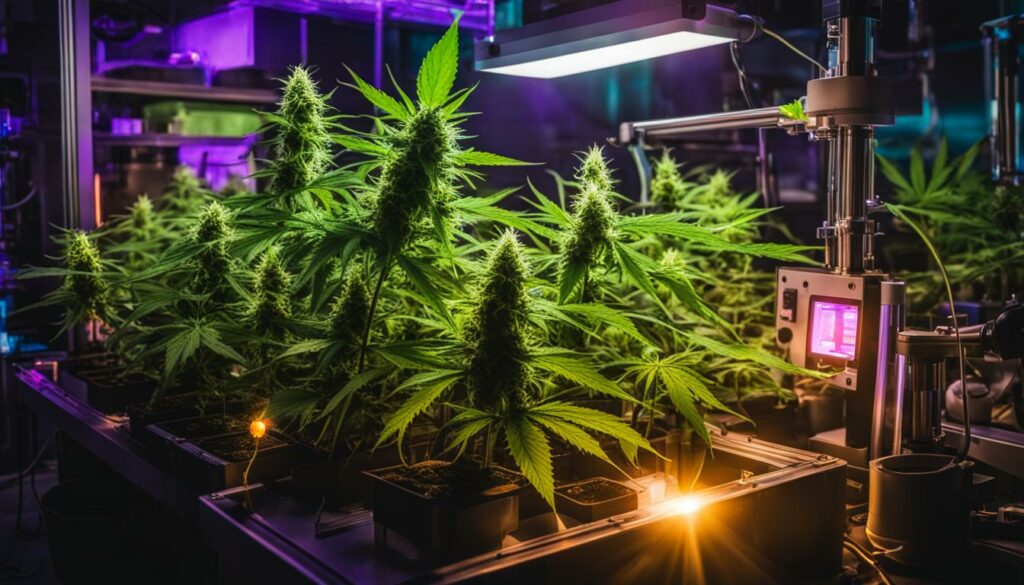
As the cannabis industry continues to evolve, genetic engineering will play a crucial role in shaping the future of cultivation. By harnessing the power of genetic modification, growers can create cannabis varieties that meet the demands of consumers and the evolving market. However, it is important to approach genetic engineering with caution and adhere to regulatory guidelines to ensure the safety and integrity of the crop. With responsible and ethical practices, genetic engineering has the potential to revolutionize cannabis cultivation and contribute to the growth of the industry.
Related Articles
- What Are the Emerging Technologies in Cannabis Cultivation?
- How Will Automation and AI Change Cannabis Cultivation?
- What Are the Potential Benefits of Vertical Farming for Cannabis?
- How Can Advanced Genetics Improve Cannabis Cultivation?
- What Are the Future Trends in Cannabis Cultivation Technology?
Conclusion
The future of cannabis cultivation holds immense promise and potential. The evolving cannabis industry is witnessing a transformation like never before, driven by technological advancements and innovative techniques. Growers now have access to a wide array of tools and practices that can revolutionize their cultivation process and lead to higher efficiency and superior quality cannabis.
Automation systems and genetic engineering are revolutionizing the way cannabis is grown, enabling consistent yields, customized strains, and improved adaptability to different environments. Sustainable practices are also gaining momentum, with growers prioritizing eco-friendly cultivation methods and minimizing the carbon footprint.
As consumer preferences evolve, there is a growing demand for specialized, high-quality cannabis products. Artisanal and craft cannabis strains offer unique sensory experiences, and non-psychoactive products, particularly those containing CBD, are becoming increasingly popular.
To succeed in this evolving industry, it is crucial for growers to stay at the forefront of technological advancements and industry trends. By embracing the future of cannabis cultivation and adopting the latest techniques, growers can position themselves for success in the ever-changing cannabis market.
FAQ
What is crop steering in cannabis cultivation?
Crop steering is a method that manipulates the hormonal system of cannabis plants to achieve desired outcomes. By adjusting environmental factors such as temperature, humidity, and water usage, growers can maximize flower production and increase yields.
What is vertical farming in cannabis cultivation?
Vertical farming is a technique that utilizes multi-level racking systems to maximize the use of grow space. This method saves energy costs and increases crop yield by optimizing airflow and using LED fixtures for lighting.
What is genetic engineering in cannabis cultivation?
Genetic engineering allows cultivators to cross strains and select desirable traits in cannabis plants. This process, which has become faster and more efficient, offers the potential for creating customized cannabis varieties with improved climate tolerance, resistance to pests, and specific cannabinoid ratios.
How can technology enhance cannabis cultivation?
Technology revolutionizes cannabis cultivation by enabling automated systems for consistent yields, increased production capacities, and reduced labor costs. Advanced LED lighting systems and drones equipped with AI are also used for improved cultivation outcomes.
What sustainability practices are implemented in cannabis cultivation?
Cannabis cultivation focuses on conserving water, promoting organic cultivation, and reducing the carbon footprint of production to ensure better yields and protect the planet.
What are the evolving consumer preferences in the cannabis industry?
Consumers show a growing interest in artisanal and craft cannabis strains that offer unique sensory experiences. The popularity of non-psychoactive products, particularly those containing CBD, is also on the rise.
How are regulations impacting the cannabis industry?
Standardized testing and quality assurance measures are increasingly important to ensure product safety and consistency. Cohesive regulatory frameworks are crucial for managing interstate and international cannabis trade.
What are the potential opportunities for cannabis cultivation worldwide?
Certain regions with optimal growing conditions are attracting attention as emerging cannabis markets. The recognition of cannabis’s therapeutic benefits is driving increased research, leading to the development of cultivation methods tailored for medicinal use.
Why is cannabis cultivation technology important for growers?
Advancements in technology improve efficiency, increase yields, and enhance the overall quality of cannabis products. Staying updated on the latest technological developments gives growers a competitive advantage in the industry.


